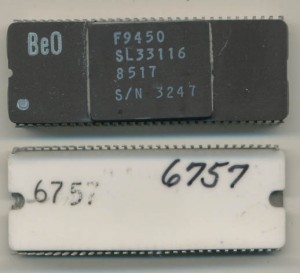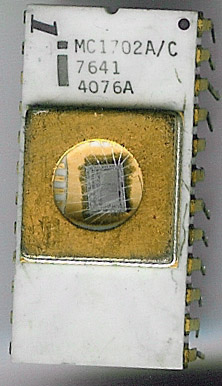A Forgotten 9900: The TI SBR9000
In the previous post the TI TMS/SBP9900 was covered, as well as its successor the SBP9989. The 9989 was to be replaced by the 9989E, a 50% shrink to 2.2u. This was never released, but TI did continue to develop the bipolar line of the 9900s. After canceling (or perhaps just renaming?) the 9989E/9990 TI announced the SBR9000 in 1985. The SBR9000 was a hi-speed 9989 successor fab’d on a 2 micron I2L process and clocked at 9MHz (twice the speed of the 9989). The change in prefix from SBP to SBR hints at another feature, while the SBP9989 was a MIL-STD-883 rated part, the SBR9000 (and its peripherals) were designed for very high radiation tolerance. The SBR9000 was spec’d to have a total dose tolerance of 1 MegaRad (it should be noted that around 10 krads proves fatal to the average person).
The part number of this example, RAY9000C-X is a bit mysterious but there are some strong clues as to its being a prototype of the canceled SBR9000. First of course is the 64-pin CDIP package, conveniently having 4 ground pins marked. Pins 1,2,27 and 28 are the ground pins on all SBP9900/9989 devices. The SBR was to be pin compatible so has the same ground pins. The date on the back of the RAY9000 is 8525, the SBP9900 was out of production in 1983 so that rules it out, leaving either a 9989, or the most likely, a sample of a SBR9000. Why TI canceled the SBR9000 remains a mystery, perhaps they found the 9989 to be adequate for their customers needs, as it continued to be produced into the 1990’s.
Tags:
MIL-STD-883, SBP9900, SPB9989, TMS9900
Posted in:
CPU of the Day





